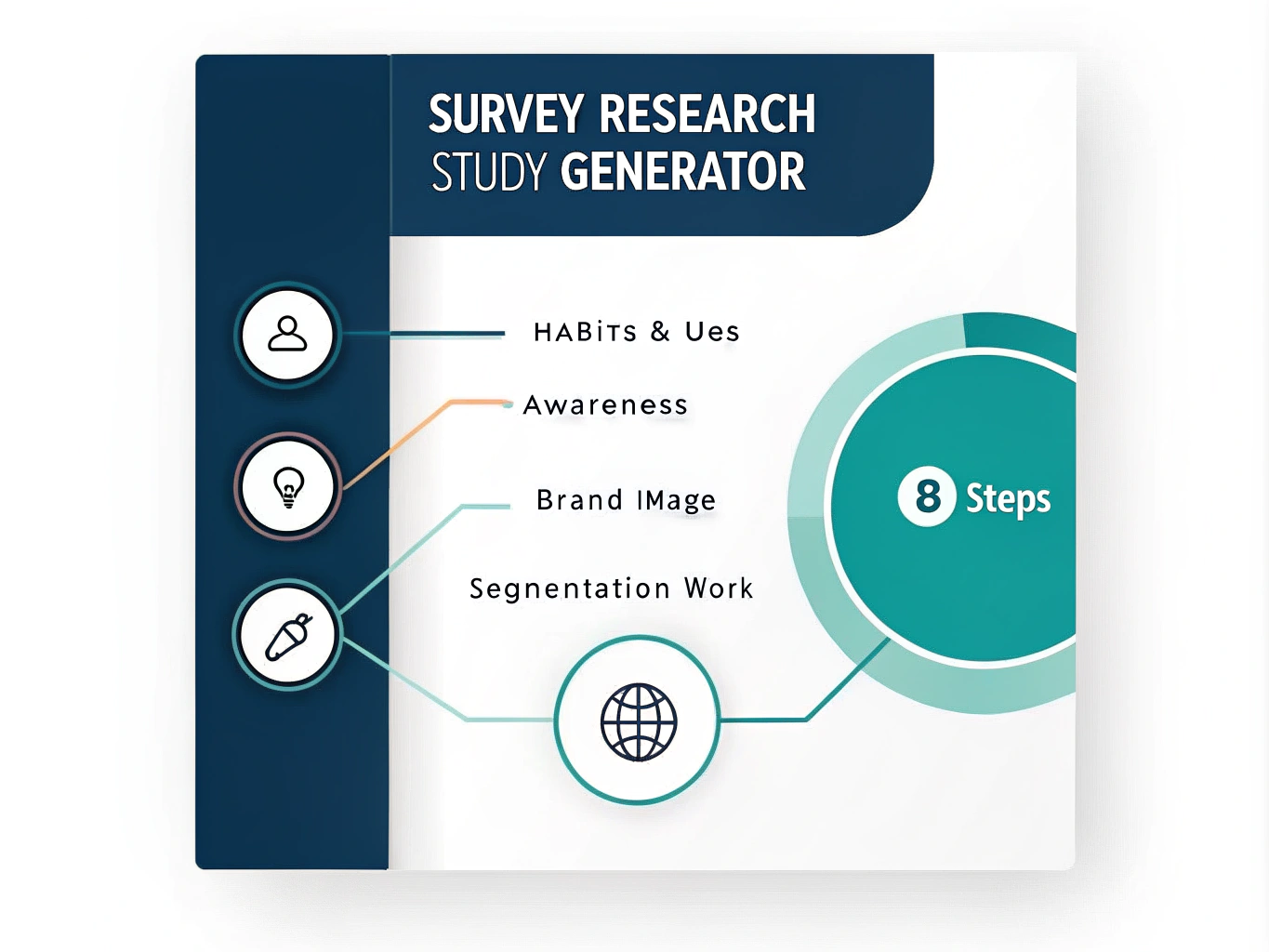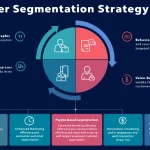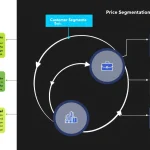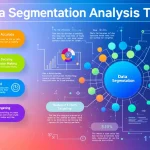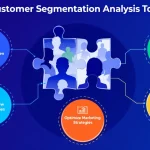Is this tool helpful?
How to Use the Survey Research Study Generator Effectively
-
Define the Survey Focus: Enter the core objective of your survey research. For example:
- “Assessing user satisfaction with online banking apps”
- “Evaluating employee productivity in hybrid work models”
-
Identify the Target Audience: Specify the group you want to survey. Examples include:
- “Small business owners aged 30-55”
- “Parents with children in elementary school”
-
Provide Industry Context (Optional): Add relevant industry or market segment information, such as:
- “Health tech startups”
- “Renewable energy sector”
-
Specify Habits and Uses: List behaviors or activity patterns you want to explore. For instance:
- “Weekly usage of mobile payment platforms”
- “Preferences for online learning tools”
-
Define Awareness Types: Describe types of awareness to gauge, such as:
- “Competitor brand recognition”
- “Product feature recall”
-
Enter Brand Image Attributes: Mention key brand qualities to evaluate, like:
- “Trustworthiness, innovation, accessibility”
- “Customer service, affordability, design”
-
Outline Segmentation Factors: Identify criteria for dividing your audience. Examples include:
- “Education level, geographic location”
- “Purchasing behavior, social media engagement”
- Generate the Survey Outline: Click the generate button to create a detailed survey research study outline tailored to your inputs.
- Review and Export: Review the generated outline. Use the copy functionality to transfer the content for further editing or implementation.
What Is the Survey Research Study Generator?
The Survey Research Study Generator is a straightforward tool designed to help you quickly create comprehensive survey outlines. It guides you through key areas such as habits and uses, consumer awareness, brand image perceptions, and segmentation criteria. By focusing on these areas, you ensure your survey captures essential market insights efficiently.
This tool reduces the time and effort usually needed to design in-depth surveys. It helps you structure your research methodically and covers all critical angles necessary to understand your target market and brand performance.
Benefits of Using This Survey Outline Generator
- Quick Survey Development: Generate a coherent survey outline in minutes, enabling you to focus on data collection and analysis.
- Comprehensive Market Research: Cover four vital research areas—habits and uses, awareness, brand image, and segmentation—within one study.
- Customizable for Various Industries: With optional fields, you can adapt the survey to suit different sectors, from healthcare to tech services.
- Standardized Structure: Maintain consistency across your survey projects for easier comparison and reliable results.
- Educational Framework: Learn the fundamental components of effective market research surveys, helpful for beginners and experienced researchers alike.
Practical Uses of the Survey Research Study Generator
1. Product Development & User Feedback
Use the generator to understand how users interact with your products and identify areas needing improvement.
Example:
- Survey Focus: “User satisfaction and feature requests for a mobile health tracking app”
- Target Audience: “Health-conscious adults aged 20-50”
- Habits and Uses: “Frequency of app use, preferred tracking features”
- Brand Attributes: “Ease of use, accuracy, motivational support”
2. Brand Positioning and Marketing Insights
Gather detailed information on brand perception, customer attitudes, and competitive positioning to shape your marketing efforts.
Example:
- Survey Focus: “Consumer opinions and loyalty drivers for a premium coffee brand”
- Target Audience: “Urban coffee drinkers aged 25-40”
- Awareness Types: “Brand recall, association with quality”
- Segmentation Factors: “Lifestyle, frequency of purchase, preferred coffee types”
3. Customer Satisfaction and Loyalty Program Analysis
Identify satisfaction levels and improve loyalty programs by understanding customer preferences and experiences.
Example:
- Survey Focus: “Evaluation of in-store and online shopping experiences for a retail chain”
- Target Audience: “Regular customers aged 18-65”
- Habits and Uses: “Shopping frequency, preferred shopping channels”
- Brand Attributes: “Customer service, product variety, pricing”
4. Market Entry and Expansion Research
Collect essential market intelligence that helps you assess opportunities for entering new markets or developing new product lines.
Example:
- Survey Focus: “Potential demand for electric scooters in urban areas”
- Target Audience: “City residents aged 18-35”
- Industry Context: “Urban mobility and green transportation”
- Segmentation Factors: “Commuting habits, environmental awareness, income”
Key Components Covered in Your Survey Outline
- Habits and Uses: Understand user behaviors and product/service interaction patterns.
- Awareness: Measure your audience’s knowledge and recognition of your brand or products.
- Brand Image Attributes: Assess perceptions and key characteristics linked to your brand.
- Segmentation Factors: Identify demographic and psychographic characteristics to target subsections of your market.
This well-rounded approach ensures that surveys you create are detailed and actionable, helping make informed business decisions based on comprehensive market data.
Important Disclaimer
The calculations, results, and content provided by our tools are not guaranteed to be accurate, complete, or reliable. Users are responsible for verifying and interpreting the results. Our content and tools may contain errors, biases, or inconsistencies. Do not enter personal data, sensitive information, or personally identifiable information in our web forms or tools. Such data entry violates our terms of service and may result in unauthorized disclosure to third parties. We reserve the right to save inputs and outputs from our tools for the purposes of error debugging, bias identification, and performance improvement. External companies providing AI models used in our tools may also save and process data in accordance with their own policies. By using our tools, you consent to this data collection and processing. We reserve the right to limit the usage of our tools based on current usability factors.
